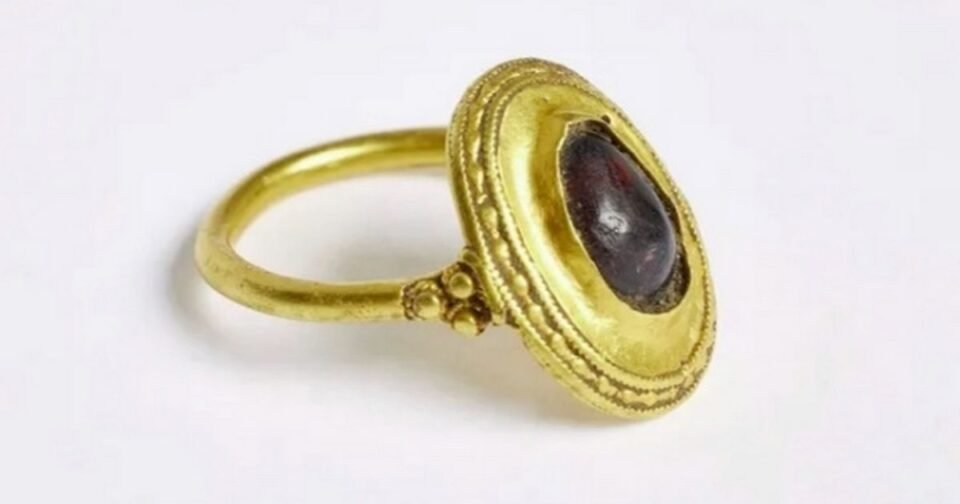Lars Neilsen was exploring an area of Southern Jutland when he found the ancient ring while using his metal detector. Museum experts in Denmark now believe it could come from a royal dynasty
A metal detectorist has unearthed a 1,500-year-old gold ring in Denmark – and it may have once belonged to an ancient king.
The rare find could have belonged to an unknown royal family which has connections to France. Lars Nielsen came across the large ornate piece of jewellery set with a red semi-precious stone, in Emmerlev, Southern Jutland a translated statement says and it is believed to date back to the fifth or sixth century.
Mr Neilson said: “Such a unique and one-of-a-kind find is completely surreal.” The National Museum of Denmark believe it has great “historical significance” and may have been owned by royalty connected to the Merovingians. The family were a dynasty of Frankish kings who ruled over areas of France, Belgium and Germany from the 5th to 8th century.
Kirstine Pommergaard, an archaeologist and curator at the museum, said: “The gold ring not only reveals a possible new princely family in Emmerlev, but also connects the area with one of Europe’s largest centers of power in the Iron Age. The gold ring is probably a woman’s ring and may have belonged to a prince’s daughter who was married to a prince in Emmerlev. Gold is typically [a] diplomatic gift, and we know that people have married into alliances.”
Its detailed craftsmanship prompted researchers to suggest it had a royal connection. They include “well-executed spirals on the underside and trefoil knobs” which are associated with Frankish jewellery work. Pommergaard added: “It is an impressive level of craftsmanship that is difficult to imitate today,”
Similar stones in the ring are known as symbols of power in the Nordics and elite gold rings from Merovingians are usually set with a coin or plaque, similar to signet ring,
Researchers added: “This shows that the ring was to serve as a symbol of power in the Nordics. Perhaps the princely family in Emmerlev had control over an area between Ribe [a town in Southwest Jutland] and Hedeby [a Danish Viking Age trading settlement in what is now Germany] and thus secured trade in the area.”
The treasure was discovered just miles from previously found artefacts including gold and silver coins, pottery and first-century golden horns. This caused experts to believe the ring was not lost but intentionally placed in the area.
Anders Hartvig, a medieval archaeologist at Museum Sønderjylland, added in the statement: “Maybe they were related. Together with other recent finds, it paints a picture that Southern Jutland has had a greater influence than previously thought, and that the Wadden Sea was not closed in on itself, but had an aristocratic presence with important trade links to the south. The person who had the ring probably also knew about the people who had the golden horns.”

